
1964
.pdf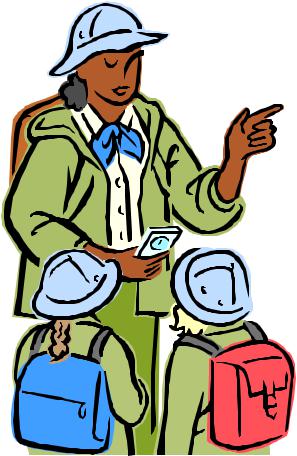
Т.Г. Галкина, А.В. Кузюкова, М.В. Цыгулева
ME AND MY WORLD: RUSSIA
Учебно-методическое пособие
Модуль 7
Министерство образования и науки Российской Федерации
Федеральное государственное бюджетное образовательное учреждение высшего профессионального образования
«Сибирская государственная автомобильно-дорожная академия (СибАДИ)»
Т.Г. Галкина, А.В. Кузюкова, М.В. Цыгулева
ME AND MY WORLD: RUSSIA
Учебно-методическое пособие
Модуль 7
Омск
СибАДИ
2011
УДК 44
ББК 81.432.1
М 45
Рецензенты:
доктор филологических наук, профессор Л.О. Бутакова
(ФГБОУ ВПО «Омский государственный университет им. Ф.М. Достоевского»);
кандидат филологических наук, доцент И.Н. Ефименко
(ФГБОУ ВПО «Сибирская государственная автомобильно-дорожная академия (СибАДИ)»)
Работа одобрена редакционно-издательским советом академии в качестве учебно-методического пособия для студентов 1, 2 курсов всех специальностей.
Галкина Т.Г., Кузюкова А.В., Цыгулева М.В.
М 45 Me and My World: Russia. Модуль 7: учебно-методическое пособие. Омск: СибАДИ, 2011. – 42 с.
Учебно-методическое пособие «Me and My World» направлено на обучение навыкам устной и письменной речи. Задания, предлагаемые в пособии, построены таким образом, чтобы активизировать мыслительную деятельность обучаемых, оптимизировать учебный процесс за счет экономии времени, усилий педагога и правильной организации самостоятельной работы студентов. Учебно-методическое пособие предназначено для студентов 1, 2
курсов высших учебных заведений.
Ил. 21 . Библиогр.: 17 назв.
ФГБОУ ВПО «СибАДИ», 2011
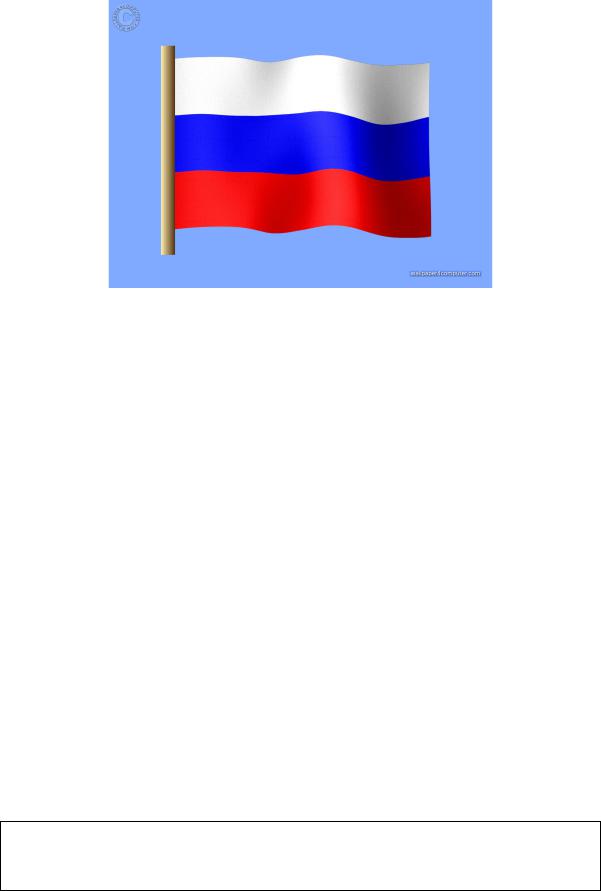
The Russian Federation
Pic. 1
1.What do you know about the Russian country profile?
2.Work in two groups, A and B. Group A, match the headings (1-12) with the information (a-l). Group B, ask questions to find out the facts about Russia.
1. |
Full name |
a) Dmitry Medvedev (2008) |
2. |
Population |
b) +7 |
3. |
Capital |
c) US $4,460 (World Bank, 2006) |
4. |
Area |
d) 59 years (men), 73 years (women) (UN) |
5. |
Major language |
e) Russian Federation |
6. |
Major religions |
f) 142.5 million (UN, 2007) |
7. |
Life expectancy |
g) Moscow |
8. |
Main exports |
h) 17 million sq km (6.6 million sq miles) |
9. |
GNI per capita |
i) Christianity, Islam |
10. Internet domain |
j) .ru |
|
11. International |
k) Oil and oil products, natural gas, wood and |
|
dialling code |
wood products, metals, chemicals, weapons |
|
12. President |
and military equipment |
|
l)Russian
3.Help your partner to make up sentences using the information above and the words from the box.
to cover |
to number |
to export |
to speak |
to occupy |
to count |
surface |
territory |
economy |
resources |
E.g. The full name of our country is the Russian Federation.
4.Now workwith a partner from the other group to ask and answer questions as in the example.
E.g. What is the full name of our country? - The Russian Federation.
5.Imagine, that you are talking to a foreign friend about the Russian country profile. Use the information from Ex. 2 – 4 to complete the conversation.
You: So the time has come to say goodbye, Mike?
Friend: Yes, and I’m sorry about it. I’ve enjoyed my stay here very much. Unfortunately the time has passed very quickly.
You: What will you tell about the Russian…… to your family? Friend: …….
And so on…..
6.Work in pairs, ask your partner if he/she knows the words concerning the geographical location of some country.
E.g. Do you know what the word area mean? – Yes, I do. It means territory.
area |
climate |
plains |
economy |
resources |
nature |
desert |
executive |
opportunity |
legislative |
border |
subtropical |
diversity |
highland |
parliamentary |
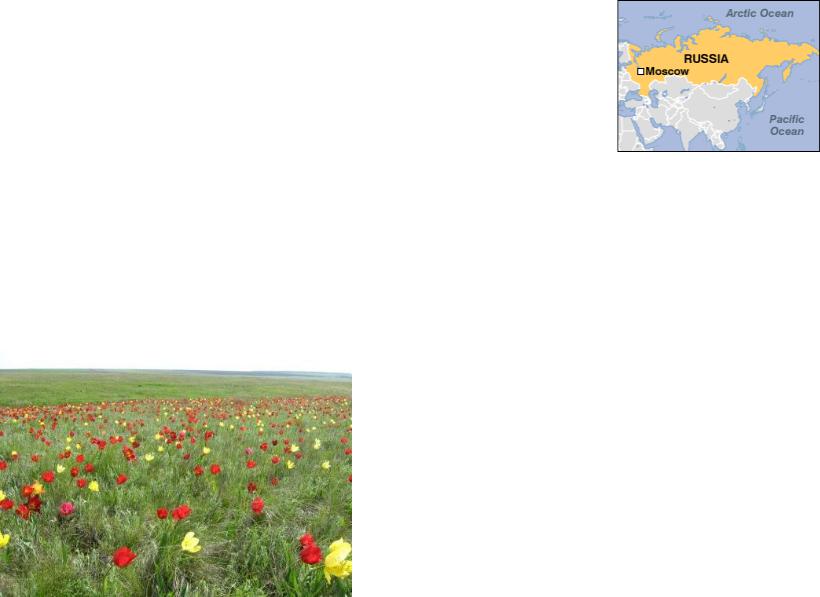
cover |
count |
territory |
vegetation |
scientific |
Europe |
various |
forests |
steppes |
iron ore |
occupy |
mountain |
chamber |
variety |
temperate |
south |
arctic |
judicial |
tundra |
decrease |
surface |
territory |
council |
supreme |
continental |
7. Use the words from Ex. 6 to complete the sentences:
1)Russia is the largest … in the world.
2)The … in Russia is very rich.
3)Russia is extremely rich in … .
4)The country impresses with its … and size.
5)The climate ranges from the Arctic north to the generally ... south.
6)The Russian Federation occupies the first place in the world for its … .
7)Most of Russia consists of vast stretches of … that are predominantly … to the south and heavily forested to the north, with … along the northern coast.
8. Match a word on the left with a word on the right to make common expressions:
arable; |
country; |
energy; |
distances; |
fishing; |
fleet; |
forest; |
land; |
fresh; |
republic; |
mineral; |
reserves; |
semi-presidential; |
resources; |
transcontinental; |
superpower; |
vast; |
water; |
federal; |
subjects. |
9. Now use the phrases from Ex. 8 to complete the sentences:
1.The Russian Federation is a ... extending over much of northern Eurasia.
2.Russia has the world’s greatest reserves of mineral and …, and is considered an … .
3.Russia has the world’s largest … and its lakes contain unfrozen … .
4.Russian … are a major contributor to the world's fish supply.
5.Russia possesses 10% of the world's … .
6.The largest and most prominent of Russia's bodies of … is Lake Baikal.
10. Read the text and find the sentences from Ex. 9 to check your answers.
The Russian Federation is a transcontinental country extending over much of northern Eurasia. Russia shares land borders with the following countries: Norway, Finland, Estonia, Latvia, Lithuania, Poland, Belarus, Ukraine, Abkhazia, Georgia, South Ossetia, Azerbaijan, Kazakhstan, China, Mongolia and North Korea. It also borders the Arctic Ocean, the Pacific Ocean, the Caspian Sea, the Baltic Sea, and the Black Sea. Russia is close to the United States (Alaska) and Japan.
At 17,075,400 square kilometers (6,592,800 sq mi), Russia is the largest country in the
world, covering more than an eighth of the Earth’s land area; with 142 million people, it is the ninth largest by population. Russia has the world's greatest reserves of mineral and energy resources, and is considered an energy superpower. It has the world's largest forest reserves and its lakes contain approximately one-quarter of the world's unfrozen fresh water.
The Russian Federation with its topography, its climates, vegetation, and soils span vast distances. From north to south the East European Plain is clad sequentially in tundra, coniferous forest (taiga), mixed and broad-leaf forests, grassland (steppe), and semi-desert (fringing the Caspian Sea) as the changes in vegetation reflect the changes in climate.
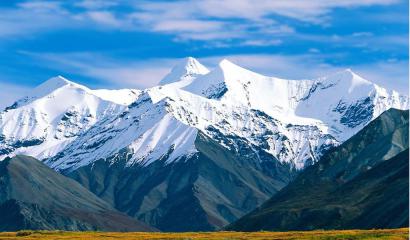
Pic. 2
Russia has the world's largest forest reserves and is known as “the lungs of Europe”. It provides a huge amount of oxygen for not just Europe, but the world. With access to three of the world's oceans — the Atlantic, Arctic and Pacific — Russian fishing fleets are a major contributor to the world's fish supply. The Caspian is the source of what is considered the finest caviar in the world.
Pic. 3
Mountain ranges are found along the southern borders, such as the Caucasus (containing Mount Elbrus, Russia's and Europe's highest point at 5,642 m / 18,511 ft) and the Altai, and in the eastern parts, such as the Verkhoyansk Range or the volcanoes on Kamchatka. The Ural Mountains form a north-south range that divides Europe and Asia, rich in mineral resources. Russia possesses 10% of the world's arable land.
Russia has thousands of rivers and inland bodies of water, providing it with one of the world's largest surface water resources. The largest and most prominent of Russia's bodies of fresh water is Lake Baikal, the world's deepest, purest, most ancient and most capacious freshwater lake. Other major lakes include Lake Ladoga and Lake Onega, two largest lakes in Europe. Of Russia's 100,000 rivers, The Volga is the most famous – not only because it is the longest river in Europe but also because of its major role in Russian history. Europe's biggest river, the Volga, flows into the Caspian Sea. The main Siberian rivers (the Ob, the Yenisei and the Lena) flow from the south to the north. The Amur in the Far East flows into the Pacific Ocean.
On the vast territory of the country there are various types of climate. It ranges from the Arctic north to the generally temperate south. In the middle of the country the climate is temperate and continental.
11. Work in pairs. Ask your partner the following questions to complete the table below.
1)Where is the Russian Federation situated?
2)What oceans is our country washed by?
3)Can you name any seas, which Russia is washed by?
4)What is the total area of the country?
5)What countries does the Russian Federation border on in the west (in the east)?
6)What can you say about the relief in Russia?
7)What mountain chains are there on the territory of our country?
8)What sea does the Europe's biggest river flow into?
9)What is the world's deepest lake famous for?
10)What types of climate are there in Russia?
11)What mineral resources is Russia rich in?
total area |
…… |
countries |
…… |
relief |
…… |
oceans |
…… |
seas |
Caspian, …… |
rivers |
…… |
lakes |
…… |
mountain chains |
…… |
types of climate |
…… |
mineral resources |
…… |
12. Tell the group about the geographical location and mineral resources of our country using the information from the table above.
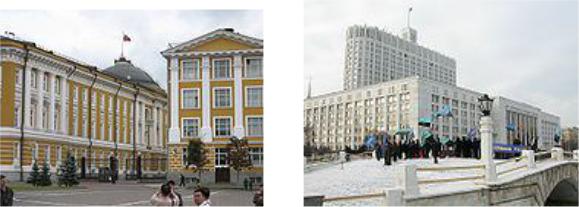
13. Match a word on the left with a word on the right to make common expressions:
appoint; |
contract; |
approve; |
government; |
federal; |
referendum; |
national; |
to the position; |
social; |
treaties. |
14. Match the expressions from Ex. 13 with the following definitions:
1)competition and mutual restraint among the various branches of government;
2)submission of an issue of public importance to the direct vote of the electorate;
3)an agreement, entered into by individuals, that results in the formation of the state or of organized society, the prime motive being the desire for protection, which entails the surrender of some or all personal liberties;
4)a formal agreement or contract between two or more states, such as an alliance or trade arrangement;
5)to assign officially, as for a position, responsibility.
15. Find and underline the sentences with the following words in the text (Ex. 16).
adopt;
bicameral;
branch;
chamber;
checks and balances;
constitutional crisis;
declare war;
deem;
executive power;
legal document;
legislative power;
overturn;
power of the purse;
representative democracy;
supreme;
wherein.
16. Read the text to find out:
1.When was the Russian constitutional crisis?
2.When was the Constitution adopted according to which Russia is a federation?
3.What is the head of the state?
4.What is the head of the government?
5.What branches does the federal government comprise?
6.What do these branches consist of?
Pic. 4 |
Pic. 5 |
Government and Politics in Russia
According to the Constitution, which was adopted by national referendum on 12 December 1993 following the 1993 Russian constitutional crisis, Russia is a federation and formally a semi-presidential republic, wherein the President is the head of the state and the Prime Minister is the head of the government. The Russian Federation is fundamentally structured as a representative democracy. Executive power is exercised by the government. Legislative power is vested in the two chambers of the Federal Assembly. The government is regulated by a system of checks and balances defined by the Constitution of the Russian Federation, which serves as the country's supreme legal document and as a social contract for the people of the Russian Federation.

The federal government is composed of three branches:
Legislative: The bicameral Federal Assembly, made up of the State Duma and the Federation Council adopts federal law, declares war, approves treaties, has the power of the purse, and has power of impeachment, by which it can remove the President.
Executive: The president is the commander-in-chief of the military, can veto legislative bills before they become law, and appoints the Cabinet and other officers, who administer and enforce federal laws and policies.
Judiciary: The Constitutional Court, Supreme Court, Supreme Court of Arbitration and lower federal courts, whose judges are appointed by the Federation Council on the recommendation of the president, interpret laws and can overturn laws they deem unconstitutional.
Pic. 6
The president is elected by popular vote for a four-year term; election last held 2 March 2008. The national legislature is the Federal Assembly, which consists of two chambers; the 450-member State Duma and the 176member Federation Council. Leading political parties in Russia include United Russia, the Communist Party, the Liberal Democratic Party of Russia and Fair Russia.
17.Use your answers to tell about the government and politics in Russia.
18.In pairs, discuss the problem of presidential term extending to a six-year term. Imagine you are one of the Duma’s members. One of you agrees with this idea, and another disagrees. Prove your ideas.
19.Look at the word economics. Write your associations with this word.
E n e r g y
C
O
N
O
M o n e y
I
C
S
20. Match the words (1-12) with their definitions (a-l).
1)consumption;
2)currency;
3)energy;
4)industry;
5)investment;
6)money;
7)nuclear power;
8)office;
9)oil;
10)outlook;
11)regrowth;
12)supply.
a)the resurgence of an industry, economy, etc.;
b)a source of power;
c)the official currency, in the form of banknotes, coins, etc.;
d)a metal or paper medium of exchange that is in current use in a particular country;
e)a room or set of rooms in which business, professional duties, clerical work, etc.;
f)power, especially electrical or motive, produced by a nuclear reactor;
g)another name for petroleum;
h)organized economic activity concerned with manufacture, extraction and processing of raw materials, or construction;
i)expenditure on goods and services for final personal use;
j)the act of investing money;
k)willingness and ability to offer goods and services for sale;
l)view or prospect.
21. Use the dictionary to find the definitions to your own associations to the word ‘economics’ in Ex. 19.
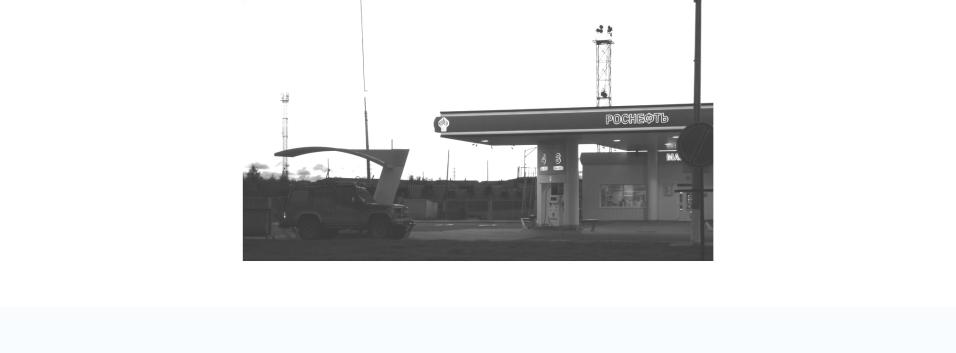
22. Read the text below about Russia’s economy and complete the table.
average salary in Russia in 2000, in |
…… |
2008 |
|
Russians lived below the national |
…… |
poverty line in 1998, in 2007 |
|
unemployment in Russia in 1999, in |
…… |
2007 |
|
world's largest reserves |
…… |
second largest reserves |
…… |
eighth largest reserves |
…… |
Russian exports |
…… |
world’s largest gas producer and |
…… |
exporter |
|
Russia is well ahead with |
…… |
Russian foreign reserves in 1999, in |
…… |
2008 |
|
middle class in 2000, in 2006 |
…… |
Russian financial position since |
…… |
1998 |
|
principal factor in Russia's growth |
…… |
Putin’s years in office: |
…… |
industry |
…… |
investments |
…… |
agricultural production |
…… |
construction |
…… |
real incomes |
…… |
average salary |
…… |
consumer credit |
…… |
people living below the poverty line |
decreased from 30% in 2000 to |
|
14% in 2008 |
arms sales |
…… |
IT industry |
…… |
space launch industry |
…… |
nuclear power plant companies |
…… |
electronics |
…… |
main source of hard currency |
…… |
Russian agriculture |
…… |
Economy
Since the turn of the century, rising oil prices, increased foreign investment, higher domestic consumption and greater political stability have bolstered economic growth in Russia. In 2007, Russia's GDP was $2.076 trillion (est. PPP), the 6th largest in the world, with GDP growing 8.1% from the previous year. Growth was primarily driven by non-traded services and goods for the domestic market, as opposed to oil or mineral extraction and exports. The average salary in Russia was $640 per month in early 2008, up from $80 in 2000. Approximately 14% of Russians lived below the national poverty line in 2007, significantly down from 40% in 1998 at the worst of the post-Soviet collapse. Unemployment in Russia was at 6% in 2007, down from about 12.4% in 1999.
Pic. 7
Russia has the world's largest natural gas reserves, the second largest coal reserves and the eighth largest oil reserves. It is the world's leading natural gas exporter and the second leading oil exporter. Oil, natural gas, metals, and
